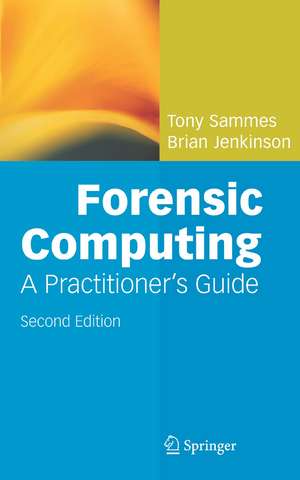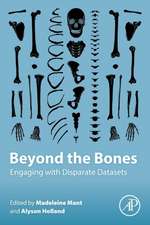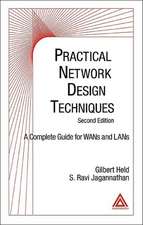Forensic Computing
Autor Anthony Sammes, Brian Jenkinsonen Limba Engleză Paperback – 13 oct 2010
- how to recover information from computer systems in such a way as to ensure that its integrity cannot be challenged and that it will be accepted as admissible evidence in court the principles involved in password protection and data encryption
- the evaluation procedures used in circumventing these safeguards
- the particular legal issues associated with computer-generated evidence and how to ensure admissibility of such evidence.
This edition is fully expanded and updated with treatment of metadata files, NFTS systems, CHS and LBA addressing, and alternate data streams.
| Toate formatele și edițiile | Preț | Express |
|---|---|---|
| Paperback (1) | 508.11 lei 6-8 săpt. | |
| SPRINGER LONDON – 13 oct 2010 | 508.11 lei 6-8 săpt. | |
| Hardback (1) | 605.13 lei 3-5 săpt. | +33.31 lei 7-13 zile |
| SPRINGER LONDON – 3 aug 2007 | 605.13 lei 3-5 săpt. | +33.31 lei 7-13 zile |
Preț: 508.11 lei
Preț vechi: 597.77 lei
-15% Nou
Puncte Express: 762
Preț estimativ în valută:
97.22€ • 101.51$ • 80.47£
97.22€ • 101.51$ • 80.47£
Carte tipărită la comandă
Livrare economică 05-19 aprilie
Preluare comenzi: 021 569.72.76
Specificații
ISBN-13: 9781849965965
ISBN-10: 184996596X
Pagini: 476
Ilustrații: X, 470 p. 196 illus.
Dimensiuni: 155 x 235 x 25 mm
Greutate: 0.66 kg
Ediția:Softcover reprint of hardcover 2nd ed. 2007
Editura: SPRINGER LONDON
Colecția Springer
Locul publicării:London, United Kingdom
ISBN-10: 184996596X
Pagini: 476
Ilustrații: X, 470 p. 196 illus.
Dimensiuni: 155 x 235 x 25 mm
Greutate: 0.66 kg
Ediția:Softcover reprint of hardcover 2nd ed. 2007
Editura: SPRINGER LONDON
Colecția Springer
Locul publicării:London, United Kingdom
Public țintă
Professional/practitionerCuprins
Forensic Computing.- Understanding Information.- IT Systems Concepts.- PC Hardware and Inside the Box.- Disk Geometry.- The New Technology File System.- The Treatment of PCs.- The Treatment of Electronic Organisers.- Looking ahead (just a little bit more).- Appendices: Common Character Codes; Some Common File Format Signatures; A Typical Set of POST Codes; Typical BIOS Beep Codes and Error Messages; Disk Partition Table Types; Extended Partitions; Registers and Order Code for the INtel 8086; NFTS Boot Sector and BIOS Parameter Block; MFT Header and Attribute Maps; The Relationship between CHS and LBA Addressing; Alternate Data Streams - a Brief Explanation.
Recenzii
From the reviews of the second edition:
"This book was the product of an ‘arms race’. … It is now listed as the standard text around which all the Forensic Computing courses at Cranfield and some other universities are based. … It is filled with good practical advice and is especially good on interpreting partition tables. … All in all this is a useful … guide to the discipline. … Truly the forensic computing expert is living in interesting times." (Alikelman, June, 2009)
"This book was the product of an ‘arms race’. … It is now listed as the standard text around which all the Forensic Computing courses at Cranfield and some other universities are based. … It is filled with good practical advice and is especially good on interpreting partition tables. … All in all this is a useful … guide to the discipline. … Truly the forensic computing expert is living in interesting times." (Alikelman, June, 2009)
Notă biografică
Until 1984, Professor A. J. Sammes was a serving British Army Officer with the rank of Colonel, late of the Royal Corps of Signals. His present appointment is Professor of Computing Science, in the Faculty of Military Science, Technology and Management at the Defense Academy, Cranfield University, Shrivenham.
His formal qualifications include a Bachelor of Science in Electrical Engineering, a Master of Philosophy in Computer Science and a Doctor of Philosophy in Computer Science, all degrees having been awarded by the University of London. He is also a Fellow of the British Computer Society and a Chartered Engineer.
His department has been more or less solely responsible for training senior police officers in the UK in the art of forensic computing. His testimony as an expert witness has been called in countless cases, of some of great national importance.
His formal qualifications include a Bachelor of Science in Electrical Engineering, a Master of Philosophy in Computer Science and a Doctor of Philosophy in Computer Science, all degrees having been awarded by the University of London. He is also a Fellow of the British Computer Society and a Chartered Engineer.
His department has been more or less solely responsible for training senior police officers in the UK in the art of forensic computing. His testimony as an expert witness has been called in countless cases, of some of great national importance.
Textul de pe ultima copertă
Forensic computing is becoming of primary importance as computers increasingly figure as sources of evidence in all sorts of criminal investigations. However, in order for such evidence to be legally useful, it is vital that it be collected and processed according to rigorous principles.
In the second edition of this very successful book, Tony Sammes and Brian Jenkinson show how information held in computer systems can be recovered when it has been hidden or subverted by criminals, and give the reader the means to insure that it is accepted as admissible evidence in court. Updated to fall in line with ACPO 2003 guidelines, "Forensic Computing: A Practitioner's Guide" is illustrated with plenty of case studies and worked examples, and will help practitioners and students gain a clear understanding in:
* The principles involved in password protection and data encryption
* The evaluation procedures used in circumventing a system’s internal security safeguards
* Full search and seizure protocols for experts and police officers.
The new volume not only discusses the new file system technologies brought in by Windows XP and 2000 but now also considers modern fast drives, new encryption technologies, the practicalities of "live" analysis, and the problems inherent in examining personal organisers.
Tony Sammes is Professor of Forensic Computing at Cranfield University and the Director of the Centre for Forensic Computing based at the Defence Academy in Shrivenham. His department has been more or less solely responsible for training and educating senior law enforcement officers in the UK in the art of forensic computing. His testimony as an expert witness has been called in a variety of cases, some of national importance.
Brian Jenkinson is a retired Detective Inspector, formally Head of the Cambridgeshire Constabulary Fraud Squad. He is now an independent Forensic Computer Consultant and is alsoclosely involved in teaching to both law enforcement and commercial practitioners. He was appointed Visiting Professor for Forensic Computing in 2002 at Cranfield University and the Defence Academy.
In the second edition of this very successful book, Tony Sammes and Brian Jenkinson show how information held in computer systems can be recovered when it has been hidden or subverted by criminals, and give the reader the means to insure that it is accepted as admissible evidence in court. Updated to fall in line with ACPO 2003 guidelines, "Forensic Computing: A Practitioner's Guide" is illustrated with plenty of case studies and worked examples, and will help practitioners and students gain a clear understanding in:
* The principles involved in password protection and data encryption
* The evaluation procedures used in circumventing a system’s internal security safeguards
* Full search and seizure protocols for experts and police officers.
The new volume not only discusses the new file system technologies brought in by Windows XP and 2000 but now also considers modern fast drives, new encryption technologies, the practicalities of "live" analysis, and the problems inherent in examining personal organisers.
Tony Sammes is Professor of Forensic Computing at Cranfield University and the Director of the Centre for Forensic Computing based at the Defence Academy in Shrivenham. His department has been more or less solely responsible for training and educating senior law enforcement officers in the UK in the art of forensic computing. His testimony as an expert witness has been called in a variety of cases, some of national importance.
Brian Jenkinson is a retired Detective Inspector, formally Head of the Cambridgeshire Constabulary Fraud Squad. He is now an independent Forensic Computer Consultant and is alsoclosely involved in teaching to both law enforcement and commercial practitioners. He was appointed Visiting Professor for Forensic Computing in 2002 at Cranfield University and the Defence Academy.
Caracteristici
Authors are the primary educators of senior police investigators in the UK in this field Professor Sammes has testified in countless criminal cases from fraud to issues of national security; he is internationally respected and has liaised with police globally Covers the basics of investigation of hardware and updated with mobile devices such as personal organisers








